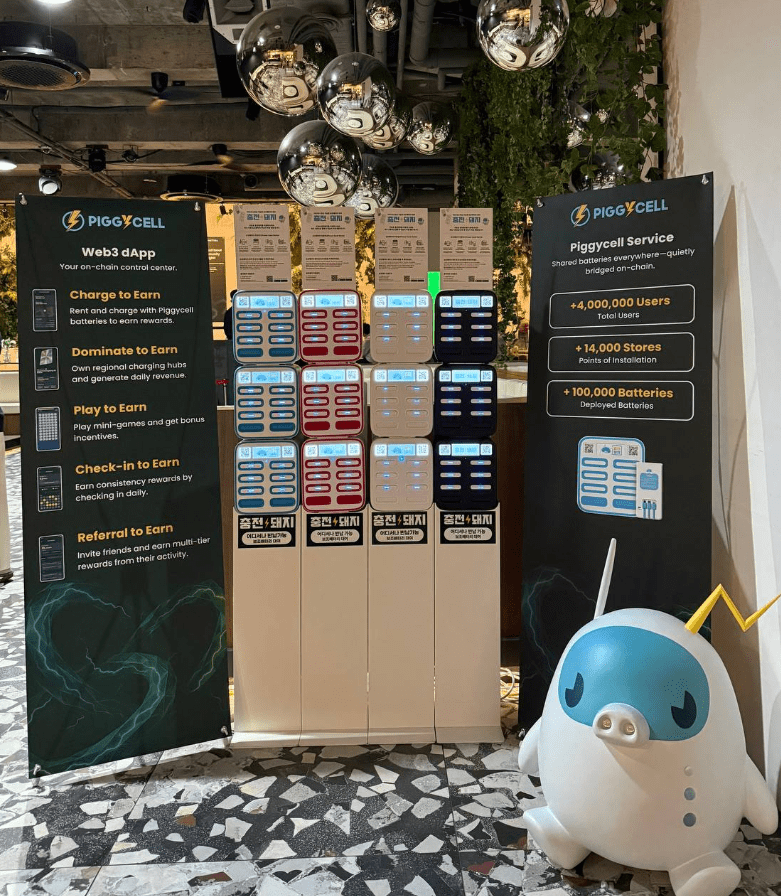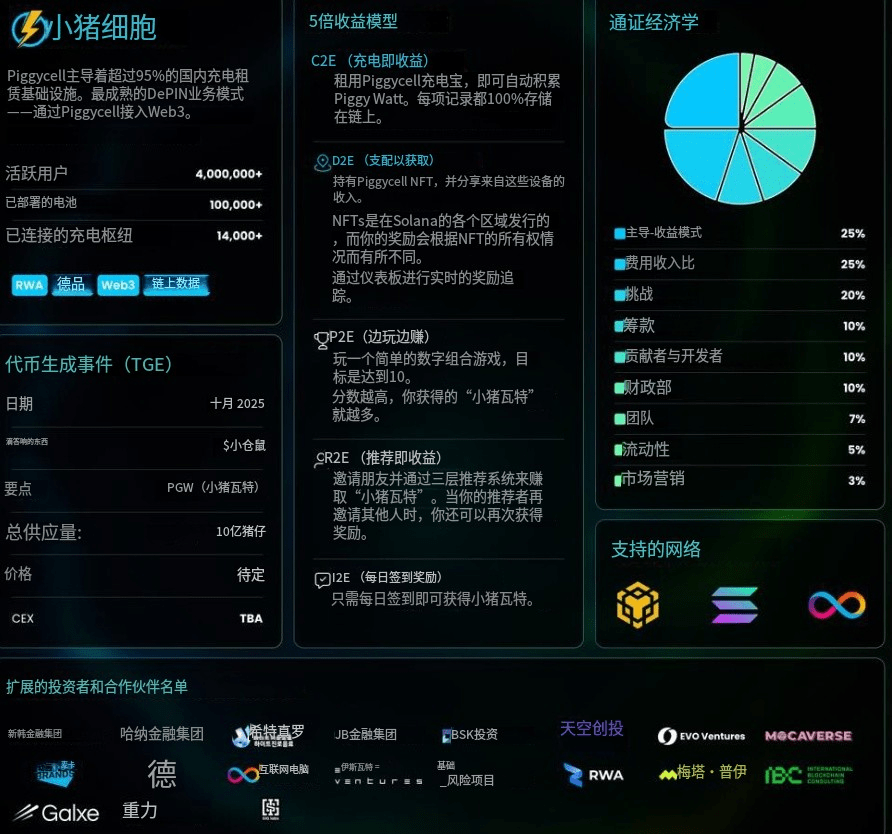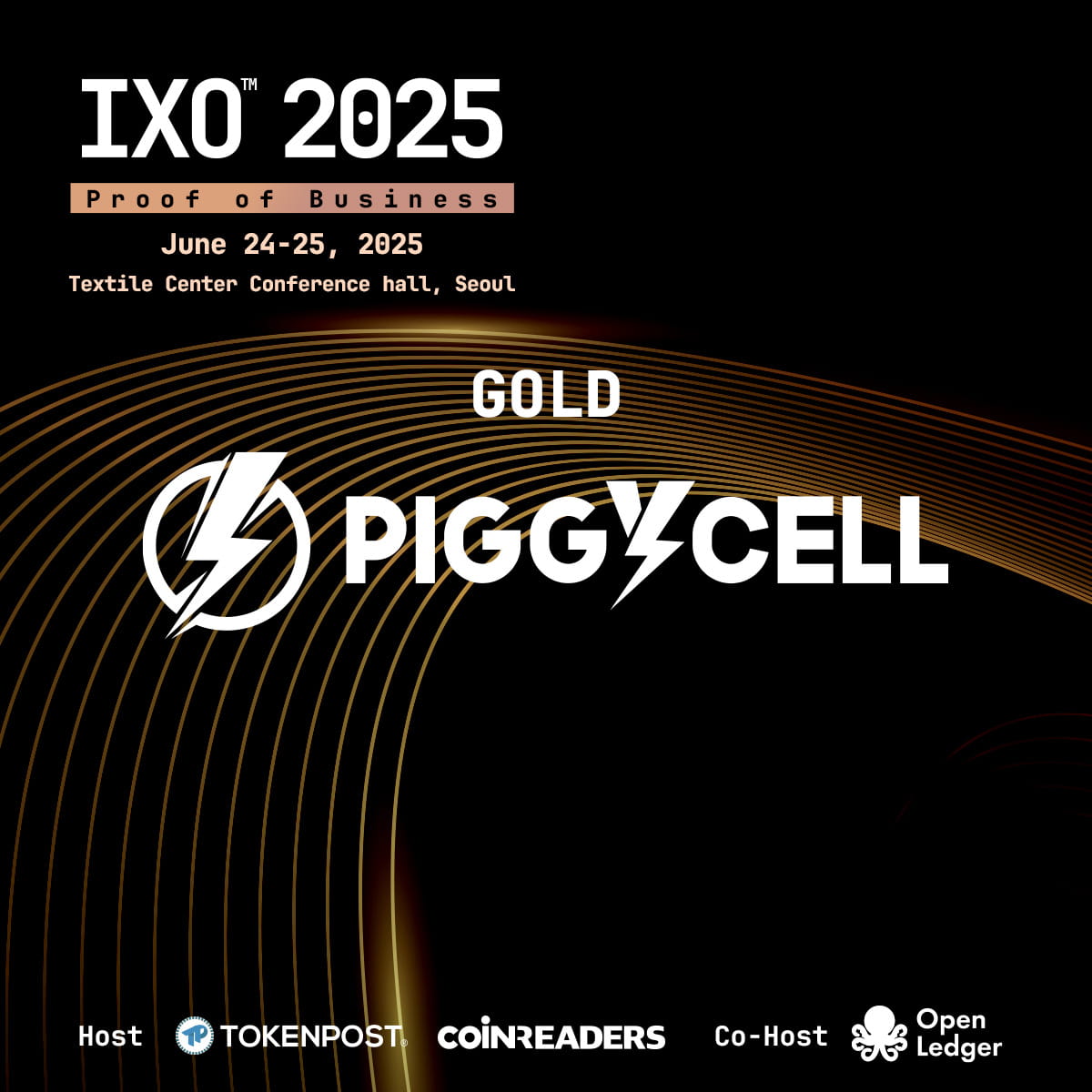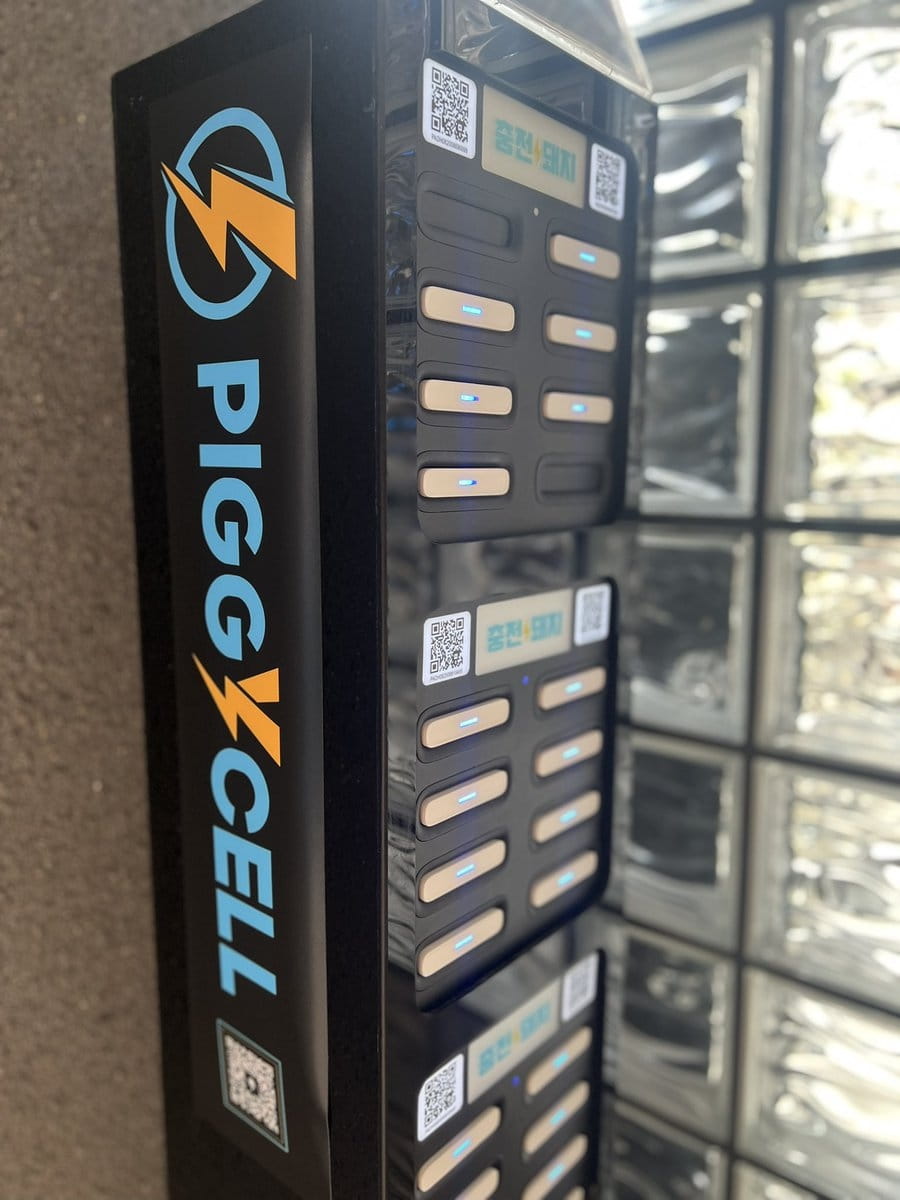💰 Overall Rating: 85/100
Brief Description: Piggycell's biggest advantage lies in its large, validated offline business foundation, clear profit model, and backing from top institutions. As the leader in South Korea's shared power bank market, it has successfully combined a solid physical business with a blockchain economic model, significantly reducing the risks of purely conceptual projects. The main uncertainty lies in whether its token economic model can operate stably after launch, and the replicability of its business model in other global markets.
Follow me, click here to exchange more Alpha experiences!

🔑 The most critical factor
Founding Team: In the results of this search, limited information has been disclosed regarding the specific identity background of the core members of the Piggycell project founding team. Team information is relatively scarce.
Investment Received: The project has received strong support from well-known cryptocurrency venture capital firms and ecosystem partners.
According to multiple sources, top Web3 investment institutions such as Animoca Brands and DWF Labs have participated in the investment.
The project has also established ecological partnerships with multiple blockchain projects such as IoTeX, Galxe, and XPIN Network to enhance its technical and service capabilities.

📈 Fundamentals
Project Overview: The core goal of Piggycell is to reshape its vast offline shared power bank network through blockchain technology, building a decentralized physical infrastructure network (DePIN). Its core innovation lies in the tokenization of RWA (real-world assets) and NFT asset binding, putting the ownership and revenue rights of physical charging devices on-chain.
Core Role: You can understand it as the 'decentralized transformation of the physical power bank network'. It binds each charging device to an NFT, and the NFT holder has partial ownership of that device and can continuously earn passive income from its operational revenue.
Business Model Innovation: Through gamified mechanisms such as Charge-to-Earn, Occupy-to-Earn, and Challenge-to-Earn, it incentivizes users to participate in network construction and maintenance, sharing real cash flow with community users.
Market Position: The project is a leading shared power bank brand in South Korea, currently holding about 95% market share, with over 14,000 sites, 100,000 devices, and more than 4 million paying users. This constitutes its strongest business moat.

Community Building: The project already has a very large offline user base and a wide partner network at the initial launch stage.
Over 4 million paying users constitute its strong community and business foundation.
Its business network covers over 14,000 sites in South Korea, providing a wide range of physical application scenarios.
Competitors: Piggycell is situated in two highly关注 and increasingly competitive tracks: 'RWA' and 'DePIN'.
Core Advantage: Its unparalleled advantage lies in the large-scale validated and profitable offline business. Compared to many RWA or DePIN projects that are still in the conceptual stage, Piggycell has robust cash flow and real business support.
Market Capitalization Reference: According to the information searched, the PIGGY token was issued on the BNB chain, with a total supply of 100 million tokens. Reliable public data regarding its specific circulating market cap and fully diluted valuation (FDV) could not be found in this search and will need to be determined based on market trading conditions after the token goes live on mainstream centralized exchanges (CEX).
Holder Count: Regarding the specific distribution data of token holders, it was not explicitly mentioned in the results of this search. However, some information about its tokenomics has been publicly disclosed:
Maximum Supply is 100 million PIGGY.
Token Distribution: Ecosystem reserves account for the highest proportion (60%), financing accounts for 20%, team accounts for 7%, contributors account for 7%, NFT incentives account for 3%, and market accounts for 3%.
Follow me, click here to exchange more Alpha experiences!



